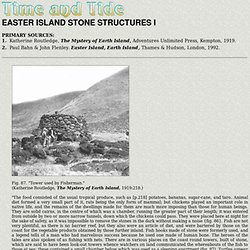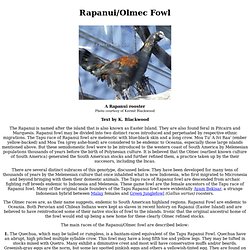

View topic - Rare and heritage chickens, turkeys. Are feral chickens are protected? If so, Why? Here is a response from the Kauai Division of Forestry and Wildlife wildlife biologist: "Feral," meaning "wild," chickens are protected.

All wild birds are protected under State law. With respect to "wild chickens" or jungle fowl, we refer to them as chickens found in the wild, such as birds in Kokee area, or any wildland area. However, chickens found roaming around developed areas, such as rural or suburban neighborhoods, are referred to as "free-flying domestic chickens". These are fowl of domestic stock roaming free and are not "protected. " Division of Forestry and Wildlife will loan out traps (subject to availability) to the public to catch free-flying domestic chickens, but will not trap on private property. At the present we are not aware of any program studying the introduced jungle fowl species in Hawaii. "Wild Jungle fowl" may be bred with the proper State permits. Red roving fowl. India, which gave the red jungle fowl, the mother of all poultry to the rest of the world, is now importing poultry from outside and destroying its own indigenous species.

Today these unique breeds are disappearing, partly because of neglect and partly because of crossbreeding; about 99 per cent of all wild populations have been contaminated by domestic or feral chicken. But certain rare breeds still exist and there is time to save them -- long before the birth of Christ, a bird, never seen before in the valley of the Blue Nile, reached the court of the pharaohs. Neither the architectural grandeur of the court nor the 'gold-draped' Pharaohs could silhouette its beauty. A bright red comb rested regally on its head and shiny green and red feathers clothed its body finally ending in an eclipse plume. While most wild animals were domesticated for meat, in the case of rjf , which belongs to the family of pheasants, it was for its fighting abilities. AddThis. Easter Island Stone Structures I. PRIMARY SOURCES: 1.

Katherine Routledge, The Mystery of Earth Island, Adventures Unlimited Press, Kempton, 1919.2. Paul Bahn & John Flenley. Easter Island, Earth Island, Thames & Hudson, London, 1992. Fig. 87. “Tower used by Fisherman. " (Katherine Routledge, The Mystery of Earth Island, 1919:218.) "The food consisted of the usual tropical produce, such as [p.218] potatoes, bananas, sugar-cane, and taro. Figs. 74-77. Fig. 164. Easter Island Stone Structures I. Moa. The moa[3][4] were nine species (in six genera) of flightless birds endemic to New Zealand.[5] The two largest species, Dinornis robustus and Dinornis novaezelandiae, reached about 3.6 m (12 ft) in height with neck outstretched, and weighed about 230 kg (510 lb).[6] Description[edit] Although moa skeletons were traditionally reconstructed in an upright position to create impressive height, analysis of their vertebral articulation indicates that they probably carried their heads forward,[7] in the manner of a kiwi.

The spine was attached to the rear of the head rather than the base, indicating the horizontal alignment. This would have allowed them to graze on low-elevation vegetation, while being able to lift their heads and browse trees when necessary. This has resulted in a reconsideration of the height of larger moa. Evolutionary relationships[edit] Classification[edit] Taxonomy[edit] Emeus crassus and Pachyornis elephantopus Anomalopteryx didiformis skeleton Phylogeny[edit] Diet[edit] Rapanui/Olmec Fowl. A Rapanui roosterPhoto courtesy of Kermit Blackwood Text by K.

Blackwood The Rapanui is named after the island that is also known as Easter Island. They are also found feral in Pitcairn and Marquesis. Rapanui fowl may be divided into two distinct races introduced and perpetuated by respective ethnic migrations. There are several distinct subraces of this genotype, discussed below. The Olmec races are, as their name suggests, endemic to South American highland regions. The main races of the Rapanui/Olmec fowl are described below: 1.